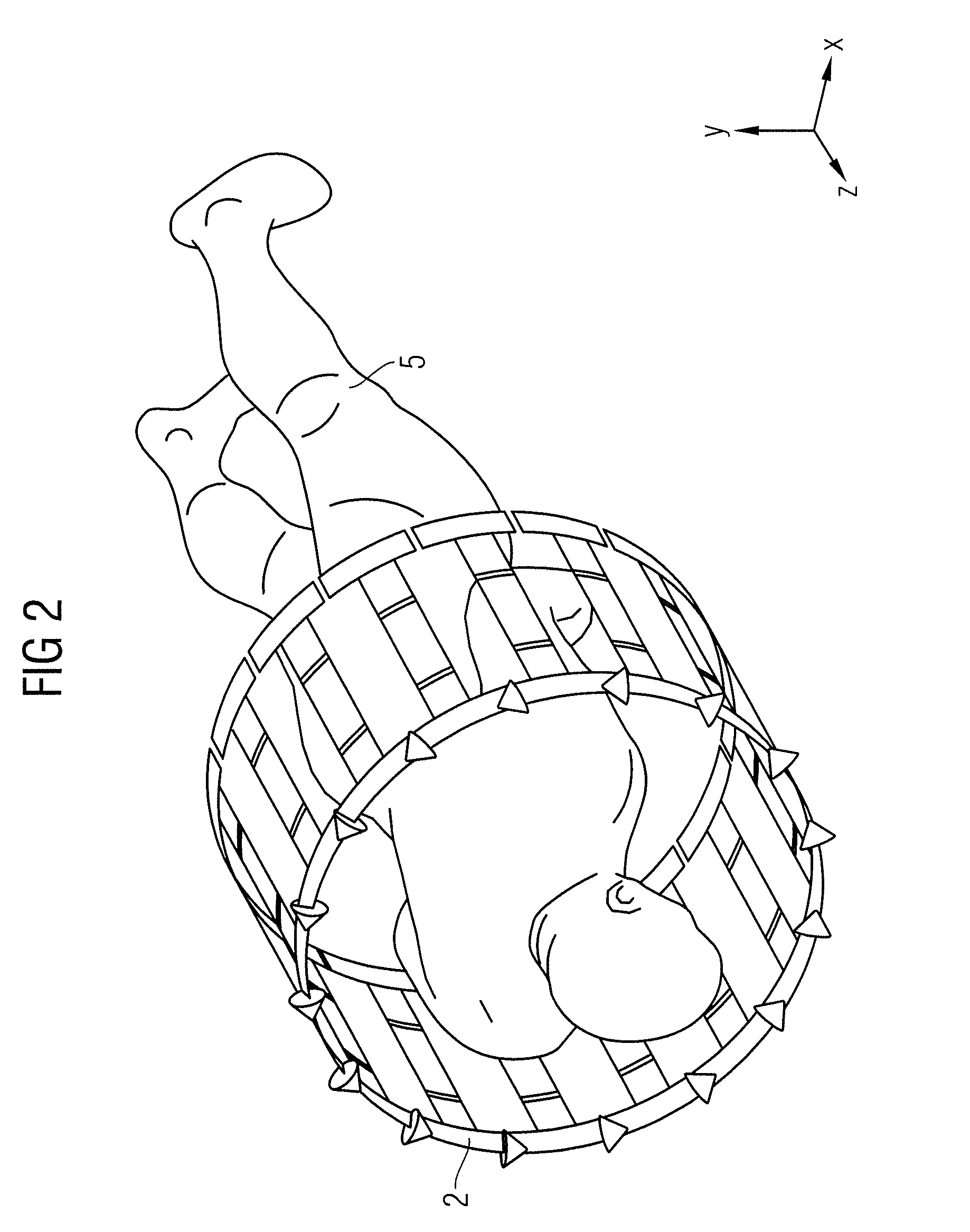Method and device for selecting body model positions for SAR monitoring of a magnetic resonance transmit array
a magnetic resonance transmit array and body model technology, applied in the direction of magnetic measurement, geological measurement, reradiation, etc., can solve the problems of high degree of complexity, inability to identify the local sar in an mr scanner, and inability to monitor individual selected potential “hotspots” in clinical practi
- Summary
- Abstract
- Description
- Claims
- Application Information
AI Technical Summary
Benefits of technology
Problems solved by technology
Method used
Image
Examples
Embodiment Construction
[0030]FIG. 1 shows a magnetic resonance apparatus 1 with a whole-body coil 2 and a tube-shaped space 3 into which a patient bed 4 with, for example, a patient 5 and a local coil 6 can be driven in order to generate exposures of the patient 5. Here a local coil with which good exposures are enabled in a local region is placed on the patient. The maximum SAR in the patient 5 should be monitored; for this multiple points 8, 9, 10 (also called model points 8, 9, 10 in the following) in the patient 5 should be determined at which absolute or relative maximum power density is realized (thus a greater power density than at other points in the patient). The point at which the highest power density occurs is called the primary model point voxel 8 in the following; points at which lower power density occurs than at the primary model point voxel 8 (but more than is expected elsewhere in the patient) are called auxiliary model point voxels 9, 10 (voxels are small volumes, for example small cubo...
PUM
 Login to View More
Login to View More Abstract
Description
Claims
Application Information
 Login to View More
Login to View More - R&D
- Intellectual Property
- Life Sciences
- Materials
- Tech Scout
- Unparalleled Data Quality
- Higher Quality Content
- 60% Fewer Hallucinations
Browse by: Latest US Patents, China's latest patents, Technical Efficacy Thesaurus, Application Domain, Technology Topic, Popular Technical Reports.
© 2025 PatSnap. All rights reserved.Legal|Privacy policy|Modern Slavery Act Transparency Statement|Sitemap|About US| Contact US: help@patsnap.com



